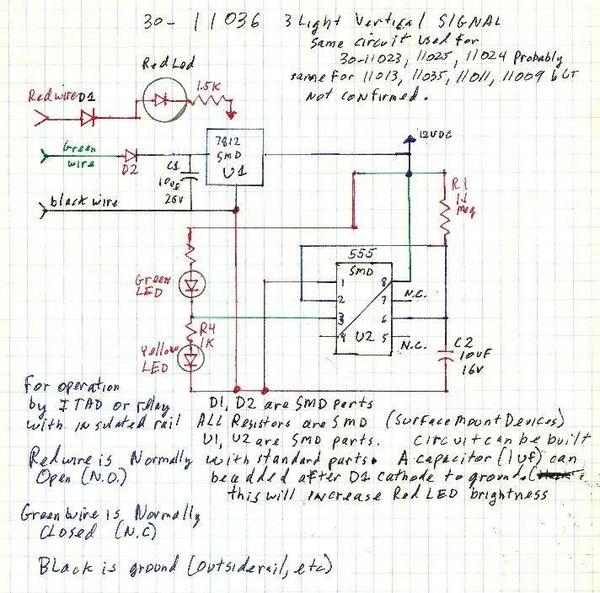Operation of the RailKing #30-11009 Cantilevered Signal Bridge
This accessory is typical of cantilevered style signal bridges. It uses colored signals for signalling a proceed, caution or stop condition.
O Scale Cantilevered Signal Bridge
Product Number: 30-11009
M.S.R.P. $ 59.95
First appeared in: 1999 Volume 2 - Berkshire
Prototype Signals:
Color-light signals came into use around 1914. Three different colors are provided for signalling.Green (proceed), yellow (caution) and red (restricted).
The signal as shown has the red lamp above the amber lamp. This is the same arrangement as used for "traffic" lights.
RailKing signal wiring:
Black wire is common.
Green is wired to a normally closed contact. (10 to 18 volts) When powered the yellow lamp is on. After 10 seconds the green lamp is on.
Red is wired to a normally open contact. (10 to 18 volts) When powered the red lamp is on












